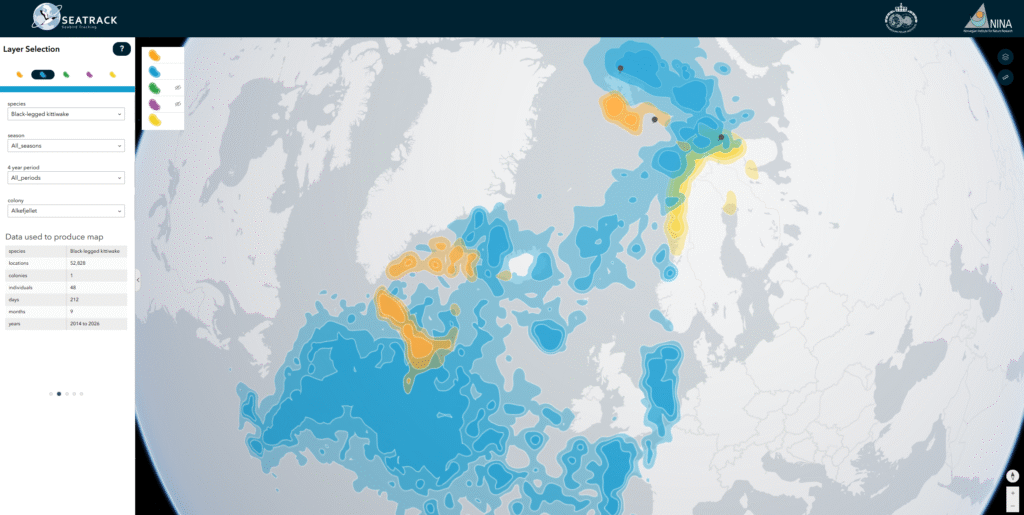Artic tern (Sterna paradisaea), representing one of six pelagic surface species within the scope of the project, are being instrumented with GLS loggers at 7 SEATRACK localities.
The Arctic tern was added as a SEATRACK species in phase 3 of the programme. The first GLS loggers were deployed in 2023.

This species covers an extremely large distribution range and is globally classified as “least concern” by the IUCN.
Arctic terns are medium-sized birds with a worldwide circumpolar distribution. They are breeding along shorelines of the northern parts of the North Atlantic. They have a grey/white plumage and a black head with flashy red beak and feet. Arctic terns are amongst the most elegant seabirds with very long wings and a forked tail. Their diet consists of small fish and crustaceans, which they catch close to the surface.

Arctic terns are long-distance migrants, flying from the northern breeding grounds in the Arctic to Antarctic wintering grounds. Until today, they are the record holder of the longest migration in the
entire animal kingdom.
Featured image: Sébastien Descamps.

View data



